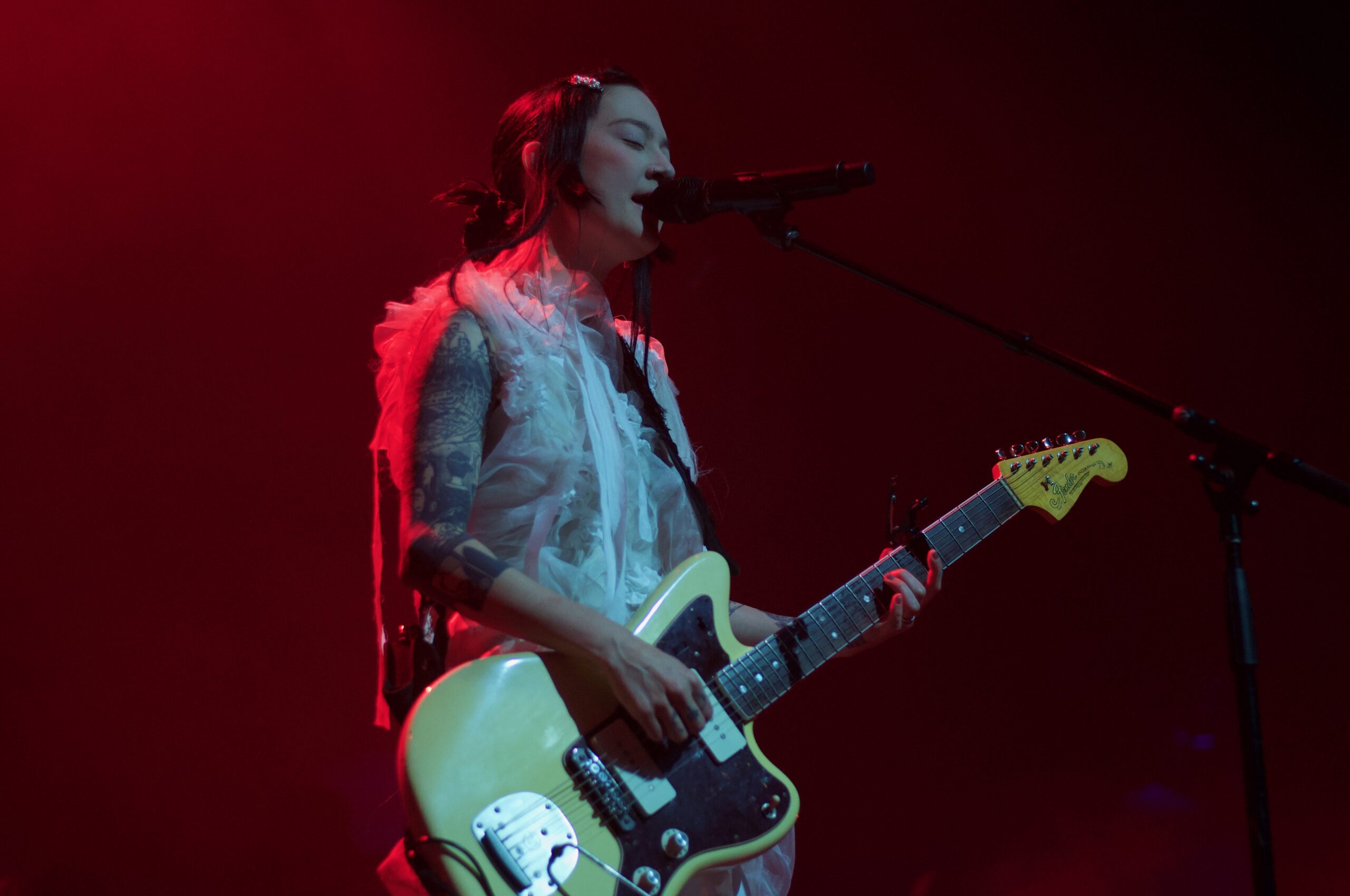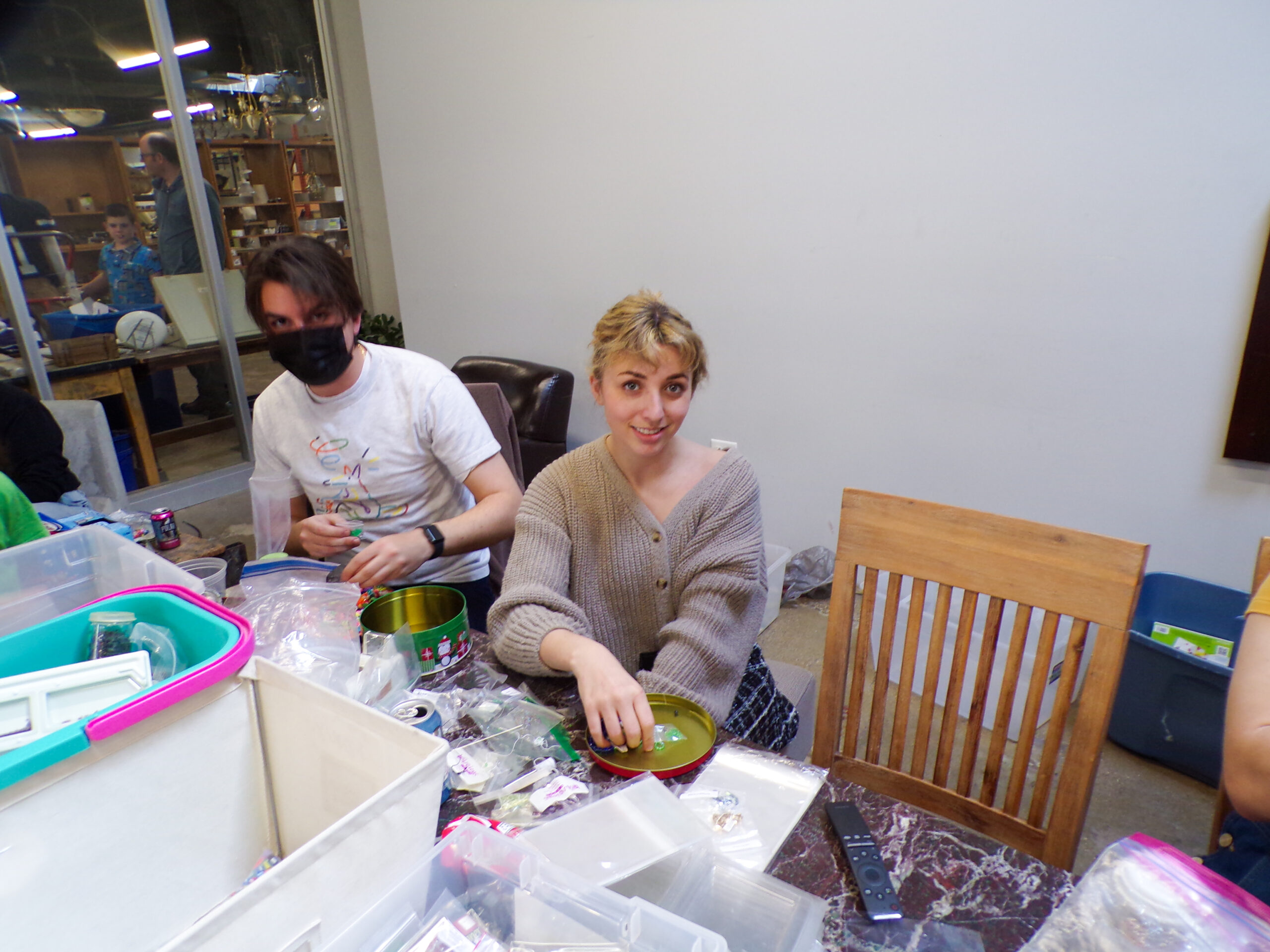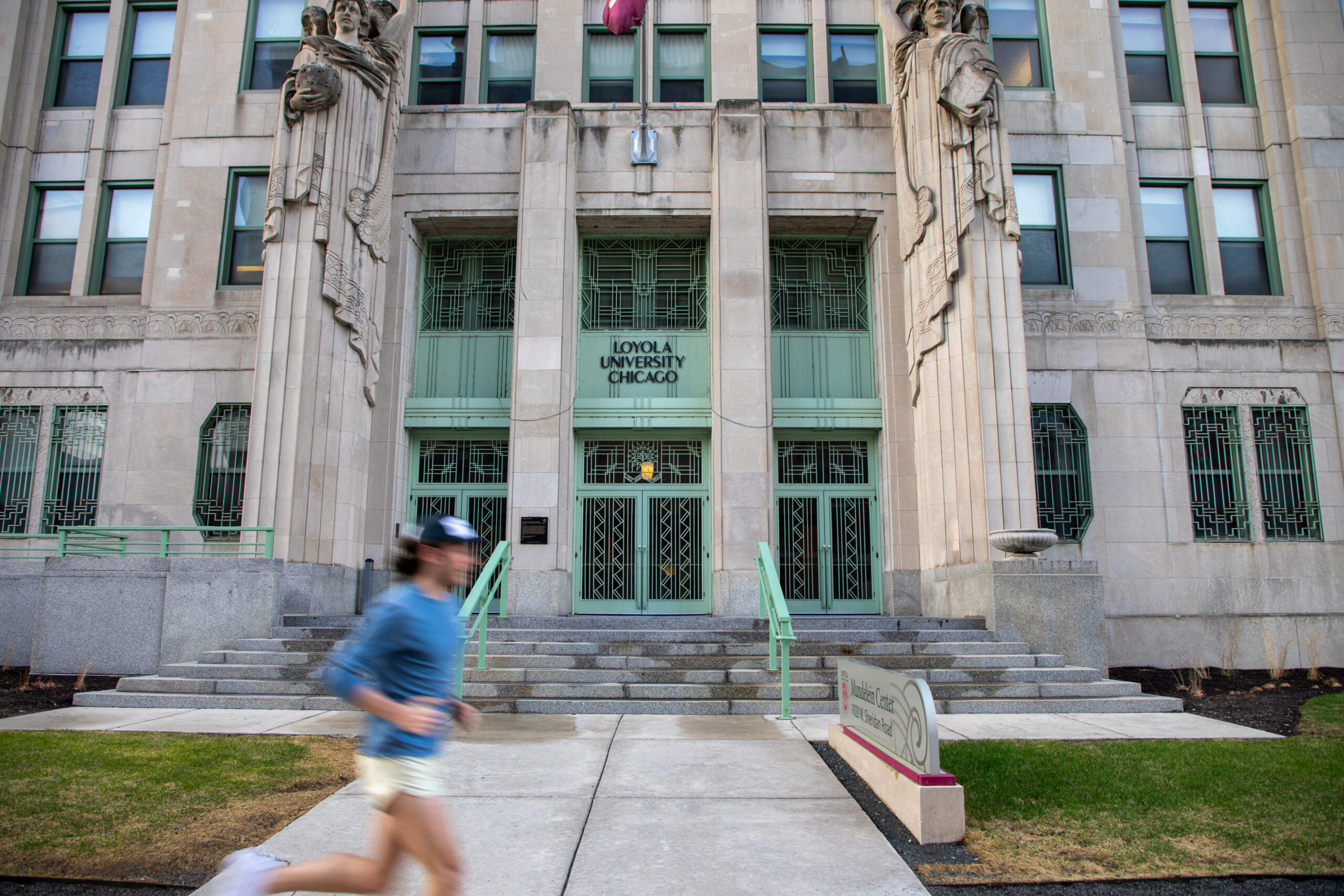It’s one of many period dramas reminding people that men should wear knee-high boots and pleated waistcoats more often. From lingering hand-holds to tense ballroom dances, renditions of Jane Austen’s “Pride and Prejudice” have “bewitched” us all — “mind, body and soul.”
It’s one of many period dramas reminding people that men should wear knee-high boots and pleated waistcoats more often. From lingering hand-holds to tense ballroom dances, renditions of Jane Austen’s “Pride and Prejudice” have “bewitched” us all — “mind, body and soul.”
In their own spin on the centuries-old classic, Loyola’s Department of Fine and Performing Arts filled the Newhart Family Theater for three sold-out performances from Feb. 23-26. Sophomore Alex de Foy starred as the off-putting Mr. Darcy, while senior Jennifer Hessel delivered a Keira Knightley-esque Elizabeth Bennet.
The show, which had a lengthy run time of 2 hours and 15 minutes, had a lot of ground to cover. Working in tandem with this are the high expectations of harcore Austenites, who have “most ardently” fallen for the aristocratic drama’s undeniable wit.
For those unfamiliar with the story, the performance may have been hard to grasp. Stilted language made some scenes hard to dissect, while others were combined or cut-out entirely, making the show feel like a marathon of tense romance scenes complicated by British accent attempts.
The adaptation by playwright Kaela Mei-Shing was reworked to fit 21st century themes, with an “extended focus on class, social hierarchy, and the novel’s beloved femme-identifying characters,” according to the Department of Fine and Performing Arts.
Jane Austen once wrote about the work to her sister Cassandra saying, “The work is rather too light, and bright, and sparkling; it wants shade.” This production leaned into that bright and sparkling nature much of the show’s intended-seriousness was lost to comedic efforts, which ranged in success.
In the novel, Elizabeth denies a proposal from Mr. Collins, a male relative set to inherit the family’s estate. In doing so, she throws away her family’s chance at keeping their property, speaking to her radical defense of personal autonomy. This shockingly severe act doesn’t translate to the Newhart stage, which depicted the scene in a much more lighthearted way, minimizing the high-stakes of possible destitution for the Bennet sisters.
Senior Bobby Barnett provided a wonderfully awkward performance as Mr. Collins, leaving the crowd giggling from the moment he assumed a stiff, upright stance and waddled onto stage in a perfect physical manifestation of the character’s social awkwardness.
Hessell gave a quintessential performance as Elizabeth Bennet, bearing a striking resemblance to Knightley’s 2005 iteration of the character. Her understated dresses, which range from patterned-white to light blue, perfectly suited the character, providing a full regency fantasy.
As one of the standout aspects of the production, costuming was top-notch. From the dainty, blush pink ribboning of Jane’s attire to the bold, tangerine gown sported by youngest sister Lydia Bennet, the sisters dazzled in mostly historically accurate garments.
Social class was also subtly displayed in the costuming, with Elizabeth’s plain gowns contrasting the much wealthier Caroline Bingley’s flashy jewelry and flowy layered skirts. Even the small details of bonnet decorations helped express each character’s individual personality.
Momina Shahzad gave a performance as Mary Bennet, with a laser-focus on the humor of the character, whose lackluster piano skills provided several laughs for audience members.
Erin Chin’s performance as Jane Bennet was an entirely fresh take on the character which totally transformed her mannerisms for the best. Often portrayed as charmingly meek, Chin infused sass and personality into Jane, which contrasted Elizabeth’s tempered state. The dynamic between the sisters was refreshing, with Jane doubting Elizabeth’s choice to marry Darcy, aligning with Elizabeth’s previous attitudes.
“I thought you hated him,” Jane’s character audaciously said to Elizabeth after learning of the engagement.
The final scene is anticlimactic. Instead of ending on the dramatic and prolonged kiss between Darcy and Elizabeth, the show focuses on the family’s doubts about the couple. In a nod to more modern notions of feminism, Elizabeth’s family emphasizes she should not marry the man she recently detested if she doesn’t want to.
In preparation for his role as Mr. Darcy, it would not be surprising to learn that de Foy spent hours mastering his longing gaze. His performance showed an aggressive commitment to appearing standoffish while yearnfully looking at Elizabeth in a way perfectly suited to the character.
Darcy’s stoicism was offset by the easygoing and charming performance of Theron Abel as Mr. Bingley.
The set dressing was minimal, with some moveable wall fragments and antique furniture. Oftentimes it was hard to distinguish the Bennet household from other settings like the Bingley’s ballroom or Darcy’s Pemberley estate. For whatever reason the floors were painted lime green, which often distracted from the scenes themselves.
Altogether, the Department of Fine and Performing Arts admirably triumphed over the many hurdles before them, while offering varying attempts at modernizing the 19th century work.
Featured image courtesy of Joe Mazza












